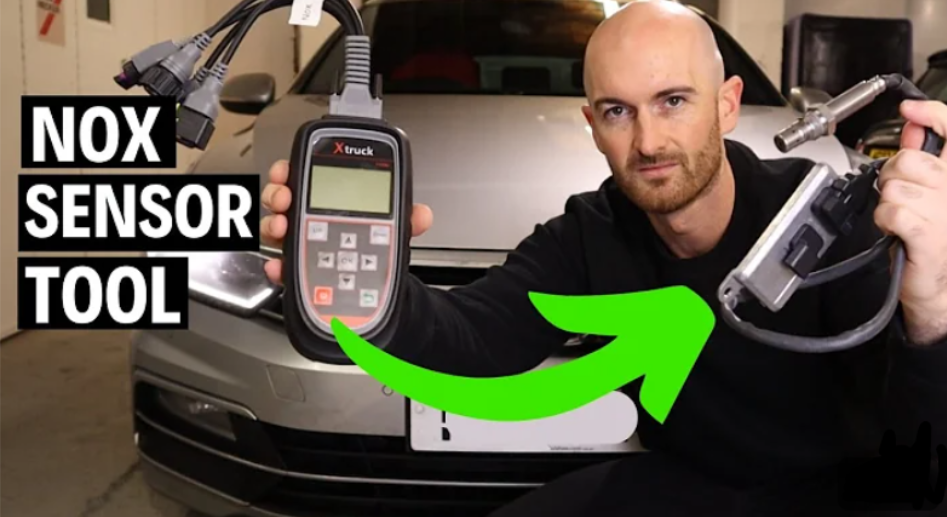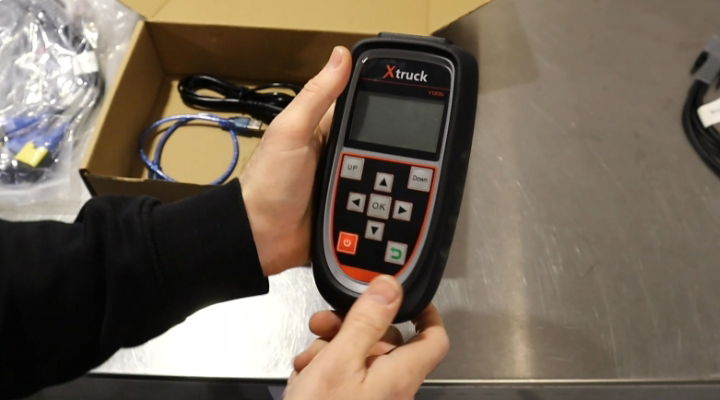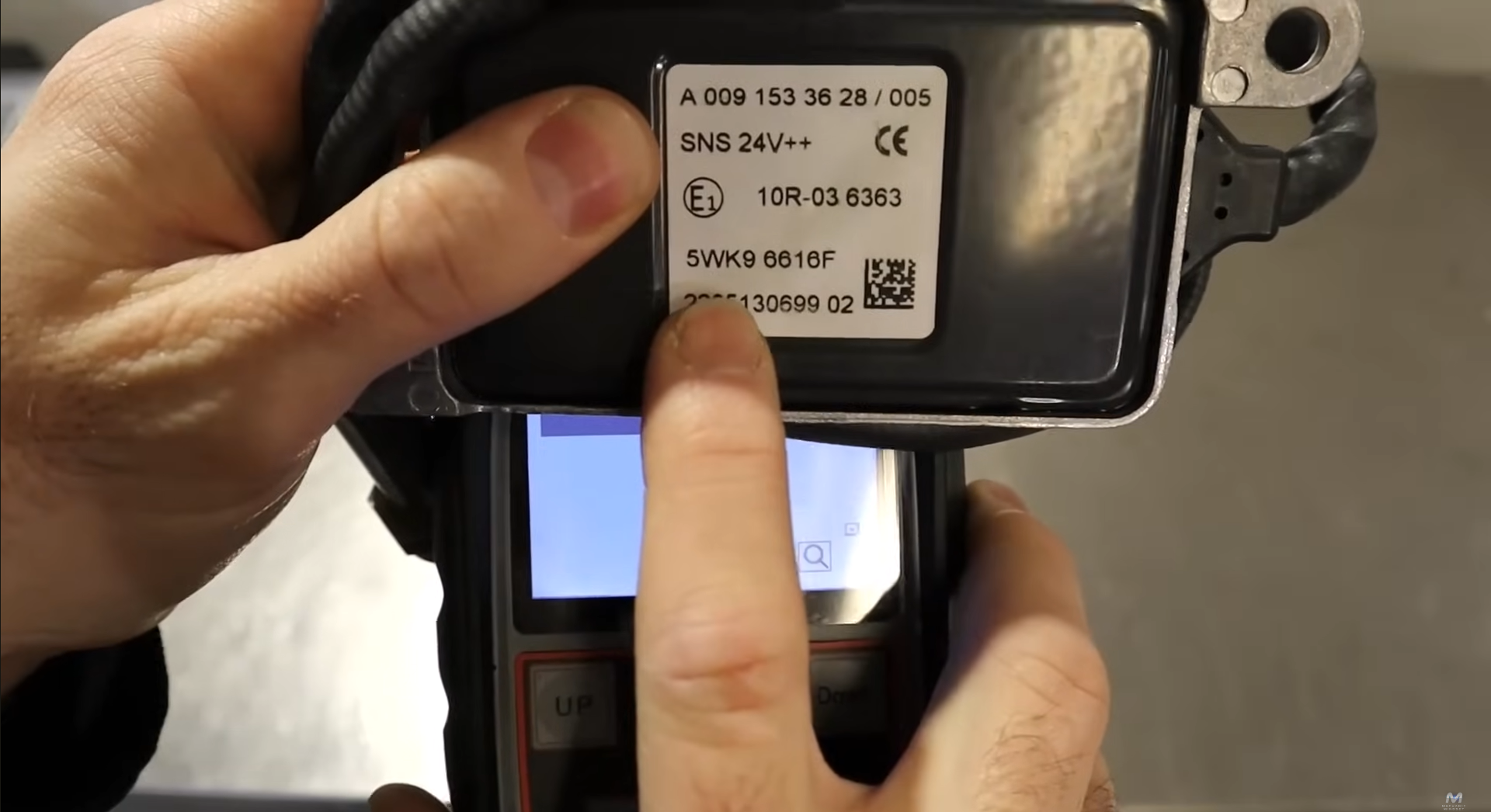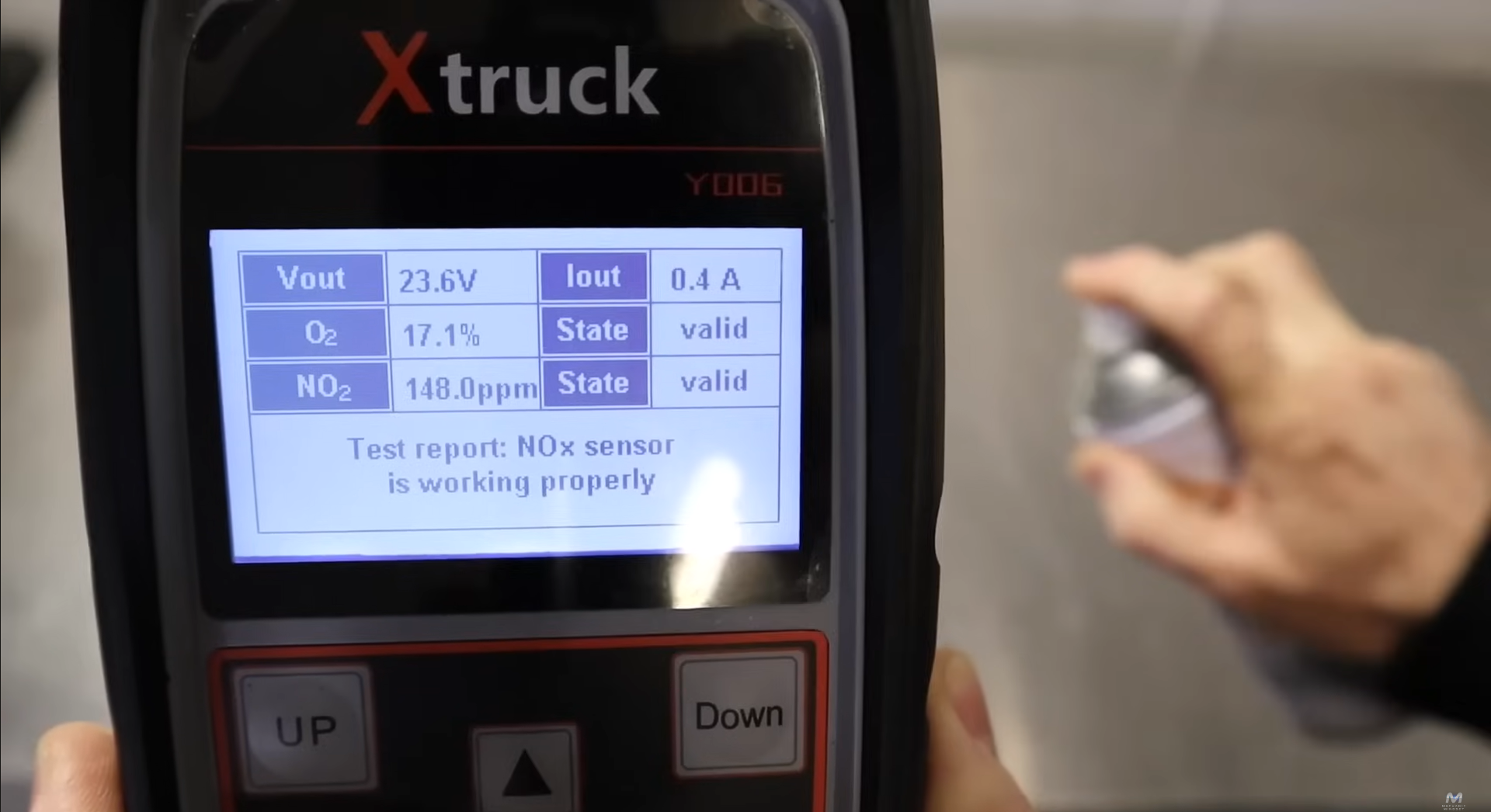AdBlue Diagnostics Made Easy with this NOx Sensor Tool

AdBlue Diagnostics Made Easy with this NOx Sensor Tool
The XTruck Y006 NOx Sensor Tester
The diagnostics of NOx sensors can be very difficult. It’s very much a guessing game if you don't actually know what the NOx content in the exhaust is. In this blog, we'll explore the capabilities of the XTruck Y006 NOx Sensor Tester, a cost-effective tool priced at around $250. This tool is a game-changer for diagnosing NOx sensors and other SCR or AdBlue faults, providing a compelling alternative to other options like handheld gas analyzers, which will cost you a few thousand dollars.

The XTruck Y006, while primarily designed for heavy vehicles and trucks, offers a solution that transcends its intended use.
Unboxing and Setup
Inside the box, the XTruck Y006 comes with a range of accessories, including cables for connecting to various NOx sensors, breakout leads, and a power supply cable. While it claims to handle exhaust gas temperature sensors, level sensors, and oxygen sensors, our focus in this blog is on diagnosing NOx sensors.
If you do work on heavy vehicles and trucks, this tool might be just the thing that you need to diagnose NOx sensors. However, even though this tool is designed for testing the NOx sensor, it doesn't necessarily tell you if it's okay or reading correctly. Now, to set it up:
Power Connection:
Begin by plugging in the laptop-type power supply to the tool.
Connect the NOx sensor cable securely into the top of the tool. If it feels tight, a gentle wiggle should ensure a proper fit.
Navigating the Tool:
Turn on the tool after connecting the power supply and NOx sensor cable.
Navigate to the CAN sensor section for testing. You will be presented with a selection of tests to pick from. Choose NOx sensor.
NOx Sensor Voltage Selection:
Specify the voltage level of your NOx sensor. This information is typically available on the NOx sensor itself. For example, if using a 24V NOx sensor, ensure you select the correct voltage within the tool.
Confirm the selected NOx sensor by clicking 'OK.' This step acts as a double confirmation of the voltage selection.
Choosing the NOx Sensor:
Choose sensor that is compatible with the XTruck Y006.
The tool provides a list of available NOx sensors. Ensure you have a good NOx sensor for accurate testing. Select the specific NOx sensor you want to test. In this case, we used the sensor 5WK96616F.
Once the NOx sensor is selected, the tool will display output voltage, current flow, and other readings. Before proceeding, be aware that the tool will heat up the NOx sensor during testing. Exercise caution and avoid touching the sensor's end once it's plugged in. The tool will indicate the progress as it warms up and once it’s at the appropriate temperature, it will display NOx readings.
Check out the Diagnostics Coach program here.

Selecting a NOx sensor that is compatible and indicating its accurate voltage level is important.
AdBlue Impact on NOx Sensors
While the XTruck Y006 is designed for NOx sensor testing, it's crucial to highlight its limitation in confirming whether a sensor is functioning correctly. This distinction becomes evident when compared to gas analyzers, especially concerning sensitivity to AdBlue and ammonia.
Believe it or not, the NOx sensors will give you a reading if you spray AdBlue over them. It's actually the ammonia in the AdBlue that gets read by the NOx sensors on the car. So if your system is putting in too much AdBlue, your NOx sensor is going to read that as NOx. The gas analyzer on the other hand is not sensitive to the AdBlue.
Ammonia is actually found in lots of common cleaning products. So to demonstrate, we sprayed a glass cleaner on the NOx sensor. And guess what? From a reading of around 2 ppm (parts per million), it quickly increased and gave us a reading of 150 ppm. So when you're testing the system, it would be wise to disconnect the AdBlue injector to confirm if it's actually reading a NOx sensor fault or it’s just AdBlue.
We have a whole training course about Diesel Engine Management System where you can learn more about EGR, DPF, SCR, and AdBlue. Plus lots more diagnostics training courses included in the Diagnostics Coach program!
Check out the Diagnostics Coach program here.

The ammonia in the AdBlue gets read by the NOx sensors on the car.
On the Road: Testing the NOx Sensors
Before diving into the tool's application, I took the car out because it's really important that you get the vehicle up to high operating temperatures when doing NOx sensor testing. If you've ever tried to test NOx sensors, you'll notice that they keep switching on and off as you're driving. When they cool down, they don't read correctly. Upon returning to the workshop, live data readings reveal NOx sensor 1 at 50 ppm and NOx sensor 2 at 190 ppm.
Now what I did is I get a known good NOx sensor and plugged it into the system. The tool displays a reading of around 2 ppm on the NOx sensor. This establishes a baseline for comparison. What we want to do is go and check what we've got back at the exhaust. Our AdBlue injector is still disconnected so there shouldn't really be any NOx conversion going on and those two sensor values should be about the same. So which one is lying?
Placing the heated NOx sensor into the exhaust, the tool shows a reading of around about 192 ppm which is matching up with what we're getting on Sensor 2. So the problem on this car then has to be that Sensor 1.
So I've taken that NOx sensor out of the vehicle and I've actually put that one from the XTruck tool into our exhaust. It fits quite nicely as it was the same thread, and what we can actually see is we've got about 250 ppm coming out of the engine. That just double confirms our issue. Remember, the sensor before when it was plugged in was reading around 40-50 ppm. So just connecting that in there and having it match up with Sensor 2 is enough for me to say that Sensor 1 is the cause of our problem.
Check out the Diagnostics Coach program here.

Having the tool that we can just put into the exhaust and compare to the live data readings is really going to help.
Key Takeaways:
The X Truck YT006 proves instrumental in identifying NOx sensor issues.
Disconnecting the AdBlue injector is crucial for accurate diagnostics.
Vehicle temperature plays a significant role in obtaining reliable NOx sensor readings.
The tool's ability to provide live data readings facilitates efficient troubleshooting.
In conclusion, this real-world example showcases the XTruck Y006 NOx sensor as an indispensable asset for automotive professionals, offering precision and efficiency in NOx sensor diagnostics.
Check out the FREE Access Area in Mechanic Mindset for some free and valuable training lessons!
